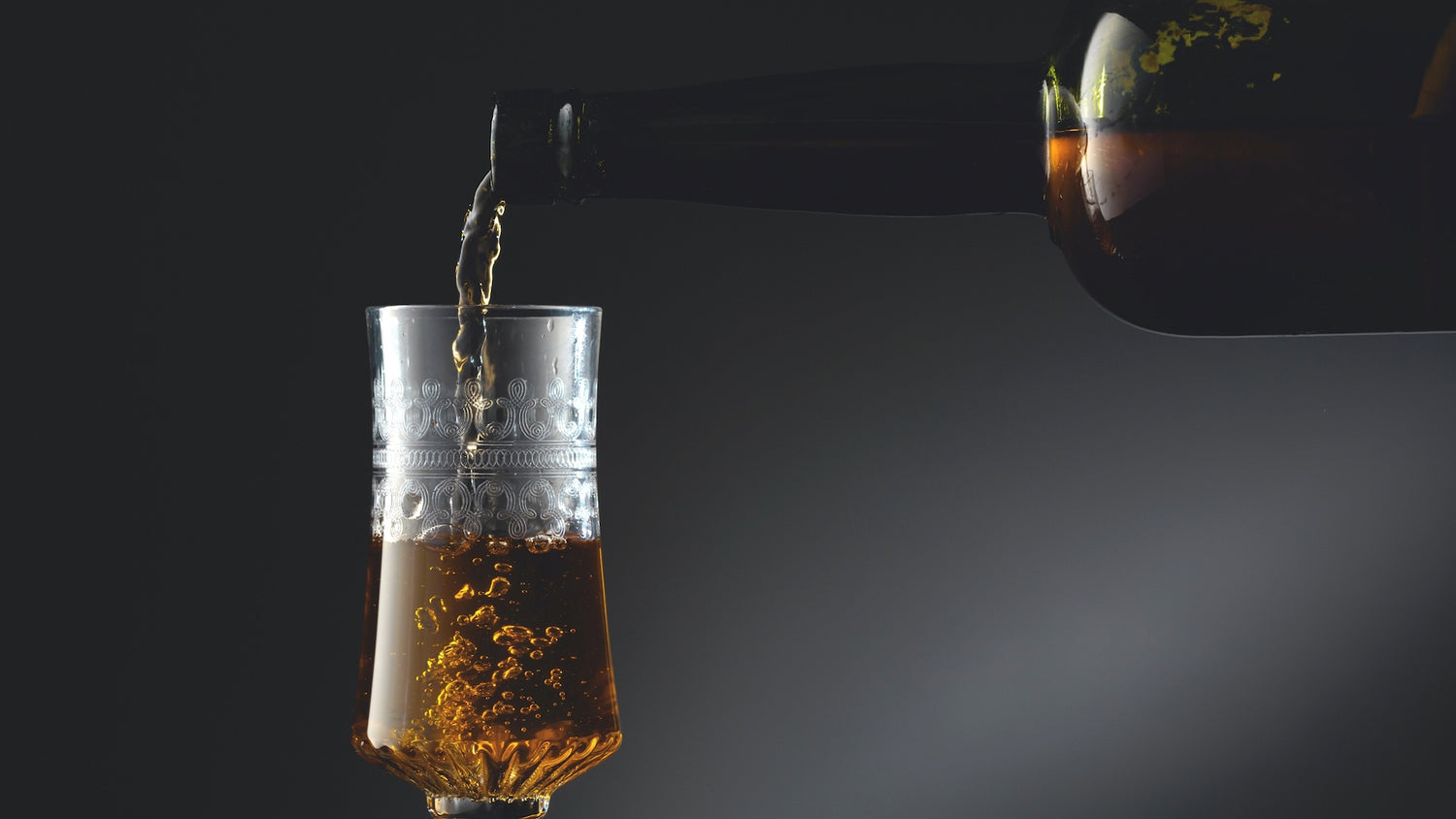Special, fortified wines, mistelle, siphons... whatever you decide to call them, fortified wines are very interesting and different products. Let's see precisely what it is and what foods it pairs with.
Bright and with colors that fade from straw yellow to dark and shiny brown, the fortified wines offer rich and complex aromas, with notes of caramel and honey, almonds and spices, figs and dried apricots, and captivate with their strong, velvety and persistent flavours.
Here's what you need to know about fortified wine , in 6 points: from the production method to the perfect pairings.
1. What are fortified wines?
Fortified wines are produced starting from a base wine (with an alcoholic strength of not less than 12%), enriched with alcohol, wine brandy, concentrated or cooked must ; alternatively, they can undergo cold concentration, which consists in eliminating a part of the water contained in the musts for a greater sugar concentration. Important: fortified wines should not be confused with dessert wines and are not necessarily dessert wines.
2. What are the main methods of processing liqueur wines?
There are three methods of processing liqueur wines.
1. The simplest is to add distillate to freshly pressed grape juice, thus stopping fermentation. The product will be naturally sweet .
2. The second method consists in fortifying the wine during fermentation , therefore always stopping the fermentation but at a later time.
3. In the third method , the wine is fortified once fermentation is complete , so the final flavor will be dry .
3. What is the best-known Italian fortified wine?
Marsala , whose origins date back to the Phoenicians and Carthaginians. It is produced in the province of Trapani (with the exclusion of the territories of the municipalities of Pantelleria, Favignana and Alcamo) starting from Grillo, Catarratto, Damaschino, Inzolia grapes for the Ambra and Oro types, while Pignatello, Nero d'Avola and Nerello
Mascalese for the Ruby version.
The bunches are harvested with care, to choose the perfectly ripe ones, the vinification is carried out in white, except for the Ruby. The wine obtained is placed in 300-400 liter barrels, preferably made of oak or cherry, left empty (i.e. 2/3 filled), to encourage a series of oxidative processes that modify its colour, aroma and flavour.
Based on the minimum ethyl alcohol and aging, Marsala is divided into:
- Fine (alc. 17% vol. - 1 year of aging)
- Superiore (alc. 18% vol. - 2 years of aging)
- Superiore Riserva (alc. 18% vol. - 4 years of aging)
- Virgin (alc. 18% vol. - 5 years of aging)
- Vergine Riserva (alc. 18% vol. - 10 years of aging)
How is Marsala tasted? Marsala should be tasted fresh , around 12-14° C, in crystal glasses shaped like a small tulip. Marsala is a meditation wine , to be tasted alone or paired with dessert, but some of the Superiore versions go perfectly with shellfish and fish dishes, accompanied by tasty sauces .
4. What is the Spanish fortified wine par excellence?
The Sherry . The must ferments for 40-50 days in small barrels, at least 10% full to encourage the formation of the flor (a layer of particular yeasts, which gives greater organoleptic complexity, while protecting it from excessive oxidation).
The aging of Sherry takes place in barrels and is very particular and super interesting. It's called Soleras, in which barrels (of different woods) are placed vertically, one on top of the other in a pyramid and filled starting from the top, 2/3 full. Every year part of the wine from the bottom layer is bottled and the level is replenished with wine from the top layer.
Sherry is classified into:
- Fino : these are the most delicate Sherries, light in colour, dry and with good acidity; ideal with fish tapas and prawns .
- Oloroso : they are more robust , available in both dry and sweet versions ; they combine with structured fish preparations or are used to cook meat dishes such as scallops .
- Manzanilla : it is dry, savory and has a taste that could be defined as "marine"; perfect with fish and cold cuts.
- Amontillado : After being taken from the solera, it is fortified and placed in a barrel where it matures without the protection of the flor, i.e. in an oxidative way. In this way its color becomes darker and the toasted aromas are enhanced; as for the Oloroso, this Sherry also goes well with slightly more structured fish.
- Pedro Ximenez : produced with this grape in purity, it is characterized by a very sweet taste, a robust structure and aromas that recall dried fruit; to combine with dark chocolate and chocolate-based cakes.
5. What is the most important Portuguese fortified wine?
Port , produced north of Porto, in the upper Douro valley, from around fifty grapes harvested very ripe (therefore rich in sugars and aromatic substances). The most used: Bastardo, followed by Touriga nacional, Touriga francesa, Tinta barroca and Tinta roriz. The must is fermented at temperature
controlled at around 30° C. Once 6-7% ethyl alcohol is reached, Brandy or alcohol of wine origin is added to block fermentation. At this point the Port is placed in traditional 500-600 liter pipes and left to rest for a couple of months.
Depending on the refinement there are different types of Port :
- Vintage Port : rests less than two years in barrel and is bottled for a long rest, which can last up to 20-30 years. It is intense, refined, complex , with deep colors and very balanced; the ideal pairing is certainly with bitter chocolate, but also with mature cheeses.
- Ruby : bottled after less than a year in barrels, it is young, ruby in color and reveals very fruity aromas; It goes very well with blue cheeses, tarts with fresh fruit and chocolate desserts.
- Fine Old Ruby : spends 4 years in barrels. And a little more evolved, soft, spicy.
- Tawny : ages in barrel for a long time, even 10-20 years. It appears garnet with orange reflections. Perfect with bitter chocolate.
- White Port : rests in steel for a maximum of 18 months, it is the most delicate , often dry, to be enjoyed as an aperitif .
6. Other Portuguese fortified wine?
Madeira , produced on the Portuguese island of the same name, obtained from vineyards that grow on terraces of volcanic soil facing the sea. The decisive step for the creation of the typical sweet-bitter caramel aroma is the heating to which the Madeira is subjected for at least three months, at 40-50° C in steel containers or in barrels in heated environments (the etufas). The production process of Madeira is similar to that of Port (with the fermentation of the must and the addition of Brandy and ethyl alcohol).
There are 4 types of Madeira classified by the name of the grape variety (if in percentage greater than 85%) or by the degree of sweetness:
- Malmsey : Malvasia grapes are grown near the sea and give the wine unmistakable aromatic notes and a very sweet and rich flavour ; it goes well with the local bolo de cana”, a dark cake made with molasses and concentrated sugar cane syrup.
- Bual : has a sweet and structured flavour, with a shiny brown color and an intense, smoky aroma. Ideal after dinner or with rich desserts.
- Sercial : characterized by its amber colour, richness of acidity and aromas . Thanks to its delicate taste it is ideal as an aperitif .
- Verdelho : obtained from the white grape of the same name, it gives structured wines with a good residual sugar. The color is darker and the aroma reveals smoky and honey scents. Excellent for after dinner.




